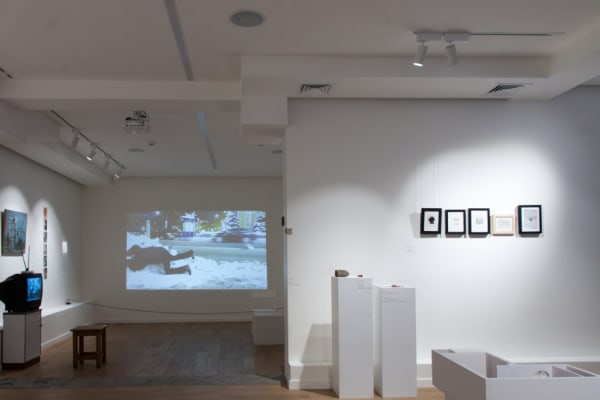As part of the Summer Show 2018 Voloshyn Gallery is proud to present a group exhibition of young artists titled Transmimesis: empathy to ugliness. Project curator: Yuriy Sivirin, creator of the concept: Andriy Sydorenko. The following artists will participate in the exhibition: Valentyn Chornyi & Maria Bondarenko, Eugene Klymchak & Sergio Ignatenko, Vlas Belov, Julia Beliaeva, Marina Talutto, Iurii Denisenkov, Andriy Naboka, Serhii Zapadnia, Bogdan Tomashevskiy, Aleksander Golynsky, Dmytro Krasnyi, Victor Ariefiev, Kovalenko Kirill, Tetiana Zhyvotkova, Elmira Shemsedinova, Aleksandra Makoviy, Fedir Alexandrovich, Andriy Sydorenko, Taras Yavir, Maria Matienko, Marina Bindich, Gergö Bánkúti.
This project is an invitation to join young artists in their contemplations on the nature of mimesis, variety of its manifestations, as well as a therapeutic function, which is endemic of this notion:
“Knowledge concerning mimesis has a rich, historical background. One of its first interpreters, Plato, an ancient Greek philosopher, was known for having a radical view on art in general, as he defined mimesis as an act of passive representation of nature. Most importantly, his negative attitude towards the modern art stems from the idea that art cannot completely convey God’s design, which the human soul recollects under the impression of the world of ideas.
On the contrary, Aristotle, his protégé, wasn’t so austere in this sense: he believed mimesis to be an intrinsic human ability that allowed for creativity. This creativity is caused by natural empathy, which is physically inherent to the human condition in the shape of mirror neurons.
From our early childhood, we repeat unfamiliar words and play with artificial items made out of plastic or wood. From these innocent imitations of real life we learn new words and emotions, even though, in reality, they do not have any truth in them. According to J. Baudrilliard, these childish games should be given a frightful name like ‘simulacrum’, due to the incorrect representation of their archetypes.
Certainly, Aristotle could not have foreseen such turn of events, but he understood that a thinker’s concern lies not only in discerning truth from falsehood — something that Plato strived for. Through the act of mimesis, art provides a base for sensorial development of the entire spectrum of human emotion, which could never be experienced, if not given an opportunity through mimetic catharsis. And, in this sense, our gravitation towards the ‘ugly’ is not weaker than towards the ‘enlightened’. The only difference is that some people are ashamed to admit it, while others openly display it at every opportunity.
F. Nietzsche conceptualizes this phenomenon in a tale based on Ancient Greek mythology about Apollo and Dionysus — two transmimetic archetypes, which define the dialectical conflict between orderly narcissism and intense dramatism in the artistic and cultural evolution of humanity.
Yet, there is another explanation of involuntary empathy for horror films and other forms of hideous things — they relieve our unconscious from phobias and provide an opportunity to discuss it with other people. Artist acts as a mediator in this process: he obliterates his artworks, displays antisocial behavior, his inability to conform to basic social norms, and becomes a victim of enraged extremists.
This spectacle of self-profanation, which generously exalts social phobias, also reveals under the Apollonian mask a tragicomic problem of denouncing the artistic individuality in everyday life of social relationships,” — Andriy Sydorenko.








